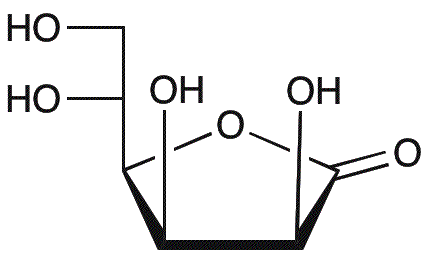D-Mannono-1,4-lactone is widely utilized in research focused on:
- Food Industry: This compound serves as a natural sweetener and flavor enhancer, providing a low-calorie alternative to sugar in various food products.
- Pharmaceuticals: It is used in drug formulation as a stabilizer or excipient, improving the solubility and bioavailability of active ingredients.
- Biotechnology: D-Mannono-1,4-lactone plays a role in the synthesis of polysaccharides, which are important for developing biocompatible materials for medical applications.
- Cosmetics: The compound is incorporated into skincare products for its moisturizing properties, helping to enhance skin hydration and texture.
- Research Applications: It is often used in laboratory studies to explore carbohydrate metabolism and its effects on cellular processes, providing insights into metabolic diseases.
General Information
Properties
Safety and Regulations
Applications
D-Mannono-1,4-lactone is widely utilized in research focused on:
- Food Industry: This compound serves as a natural sweetener and flavor enhancer, providing a low-calorie alternative to sugar in various food products.
- Pharmaceuticals: It is used in drug formulation as a stabilizer or excipient, improving the solubility and bioavailability of active ingredients.
- Biotechnology: D-Mannono-1,4-lactone plays a role in the synthesis of polysaccharides, which are important for developing biocompatible materials for medical applications.
- Cosmetics: The compound is incorporated into skincare products for its moisturizing properties, helping to enhance skin hydration and texture.
- Research Applications: It is often used in laboratory studies to explore carbohydrate metabolism and its effects on cellular processes, providing insights into metabolic diseases.
Documents
Safety Data Sheets (SDS)
The SDS provides comprehensive safety information on handling, storage, and disposal of the product.
Product Specification (PS)
The PS provides a comprehensive breakdown of the product’s properties, including chemical composition, physical state, purity, and storage requirements. It also details acceptable quality ranges and the product's intended applications.
Certificates of Analysis (COA)
Search for Certificates of Analysis (COA) by entering the products Lot Number. Lot and Batch Numbers can be found on a product’s label following the words ‘Lot’ or ‘Batch’.
Número de catálogo
Número de lote/lote
Certificates Of Origin (COO)
This COO confirms the country where the product was manufactured, and also details the materials and components used in it and whether it is derived from natural, synthetic, or other specific sources. This certificate may be required for customs, trade, and regulatory compliance.
Número de catálogo
Número de lote/lote
Safety Data Sheets (SDS)
The SDS provides comprehensive safety information on handling, storage, and disposal of the product.
DownloadProduct Specification (PS)
The PS provides a comprehensive breakdown of the product’s properties, including chemical composition, physical state, purity, and storage requirements. It also details acceptable quality ranges and the product's intended applications.
DownloadCertificates of Analysis (COA)
Search for Certificates of Analysis (COA) by entering the products Lot Number. Lot and Batch Numbers can be found on a product’s label following the words ‘Lot’ or ‘Batch’.
Número de catálogo
Número de lote/lote
Certificates Of Origin (COO)
This COO confirms the country where the product was manufactured, and also details the materials and components used in it and whether it is derived from natural, synthetic, or other specific sources. This certificate may be required for customs, trade, and regulatory compliance.


